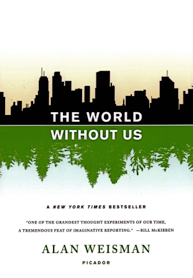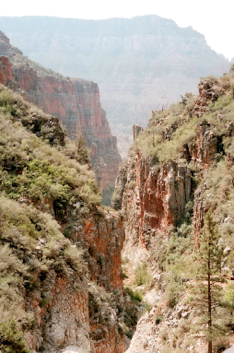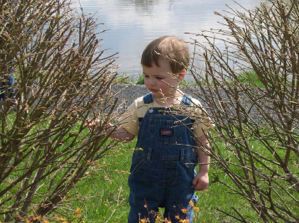

Book Reviewed: The World Without Us
Author: Alan Weisman
Publisher: Picador, St. Martin’s Press, New York
Copyright Date: 2007
ISBN: 978-0-312-42790-0
Type: Softcover
Reviewed by: Yackman
Yackman’s Rating: 6 out of 10
My Review: This is not really an adventure book. But it is a book for people who value the outdoors and wilderness, and are concerned about what our species is doing to it. That certainly includes me, and I suspect, many of you.
The premise of the book began with a simple question. The author, Alan Weisman, had written an article on Chernobyl after the meltdown. He was surprised to find that nature had rushed in to fill the void left by a human population that disappeared overnight. Even with the radioactive surroundings, nature seemed better off without us.
After reading the article, an editor friend from Discover magazine called Weisman and asked the question, “What would happen if humans disappeared everywhere?” That question sparked the thinking and research that led to this book.
The book plays back and forth between the present, the past and the future, exploring what life could be without us. For example, Weisman examines the paradox of the last great extinction. About 10,000 years ago, all of the mega-fauna in the new world as well as Europe and Asia went extinct (Mastodons, saber toothed tigers, and giant ground sloths to name a few). Yet this did not happen in Africa. These extinctions appear to have been caused by the hunting activity of modern man. The paradox is that modern humans originated in Africa, yet Africa is the only continent where mega-fauna still exist. Why didn’t our African ancestors cause mega-fauna to go extinct there?

Weisman’s explanation for this is that the human species and African mega-fauna evolved together in a way that allowed man and animals to become wary and fearful of each other, to adapt to each other. Whereas, the mega-fauna elsewhere had evolved without the pressures of human kind. They were unaware of the dangers posed by this new human creature when he appeared. They were wiped out before they could adapt.
If this seems implausible, consider the Passenger Pigeon. It was estimated in the 1800’s that a single flock contained some 200 million individuals. Yet hunted for food and slaughtered as pests, they were all gone by the 1930’s. Weisman goes on to speculate about the re-emergence of some nearly extinct species in a world without us, and illustrates his speculation with examples of protected species that have rebounded.
In another section, Weisman speculates about what human creations will fall apart and which will last in a world without us. His speculation is always supported by science and real world examples. But the chapter that has stuck with me is on plastics. Plastics are nearly eternal. They are so indestructible that the first piece of Bakelite (the first plastic) ever produced is still in existence somewhere.
Billions of tons of plastic are dumped into landfills and the oceans every year. Many more tons of plastic enter the ocean through runoff from the land. These all wind up in oceanic “dead zones” or gyres. Gyres are like eddies in rivers. They are caused by currents that circulate around the dead zone, trapping debris within.
The author passed through the North Pacific Gyre, over a 1,000 miles wide and 10,000 square miles in size (this is one of six gyres in the world’s oceans). He found a continuous field of mostly plastic trapped there; plastic parts, Styrofoam packaging and cups, monofilament line, abandoned fishnets, plastic barrels, plastic floats and plastic bags-billions of plastic bags. The thing that is disturbing about this is that plastic doesn’t degrade. Even if it is shredded or ground into tiny pieces, it is still plastic. It will be here, long after we are gone. It will become part of the ecosystem. It is already being ingested by the smallest zooplankton. Soon it will be within the cells of every living thing. Kind of scary.
While the book has it’s scary parts, it is really an excellent combination of science fact and scientific speculation. It is surprisingly hopeful, in that it seems to show that without us, life will persist and even flourish, which is some sort of comfort.

The book ends with a plea to begin addressing the array of problems identified in the book. Weisman’s most controversial proposal addresses the pressure of population, which he sees as the central issue. He proposes limiting every couple to one child. This would actually reduce world population by mid-century instead if raising it from six to nine billion.
Agree or disagree, the book is thought provoking and an interesting read, especially if you are into science and the environment.
